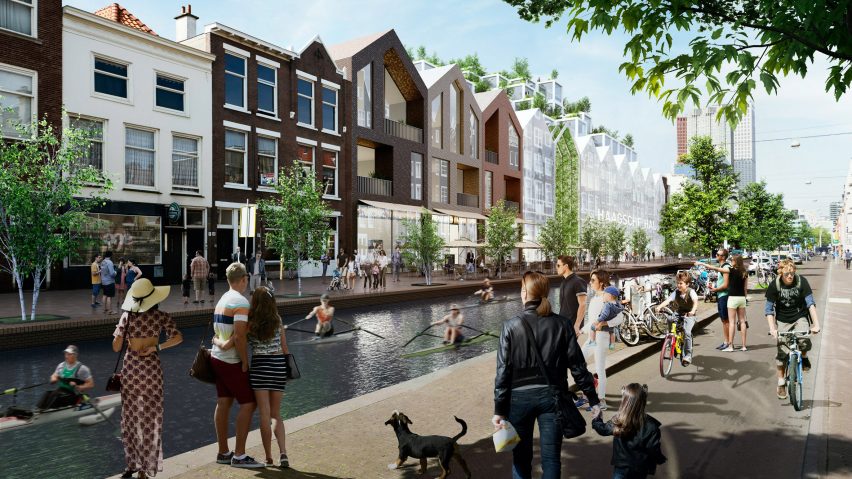
MVRDV imagines restoring The Hague's historic canal network
MVRDV has revealed visuals of The Hague with its 17th-century canals reopened and refilled to demonstrate how their restoration could help revive the city's centre.
Developed in collaboration with local neighbourhood organisations, MVRDV's vision imagines the Dutch city's historic canals, which once ran through its centre, restored as waterways for swimming, canoeing, pleasure boats, and a koi carp habitat.
The aim of the project is to show how the waterway's revival could regenerate parts of the city and in turn boost its economy, biodiversity and traffic and water management.
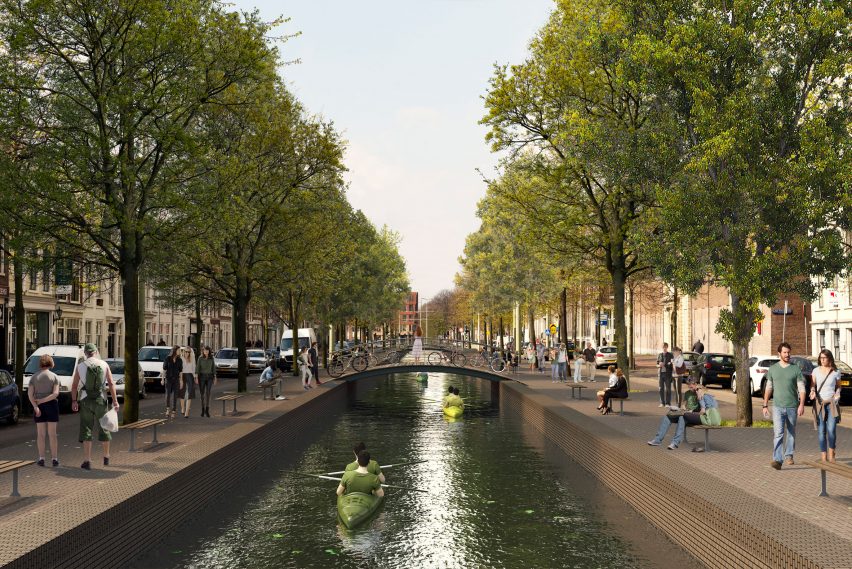
"All over the world, neighbourhoods like the old centre of The Hague form the backbone of tourism and provide an identity to a city, but in The Hague somehow this ancient and incredibly charming area was forgotten," says Winy Maas, architect and co-founder of MVRDV.
"The area offers the unique chance for an urban regeneration that will improve the local economy and make a leap forward in the city’s energy transition."
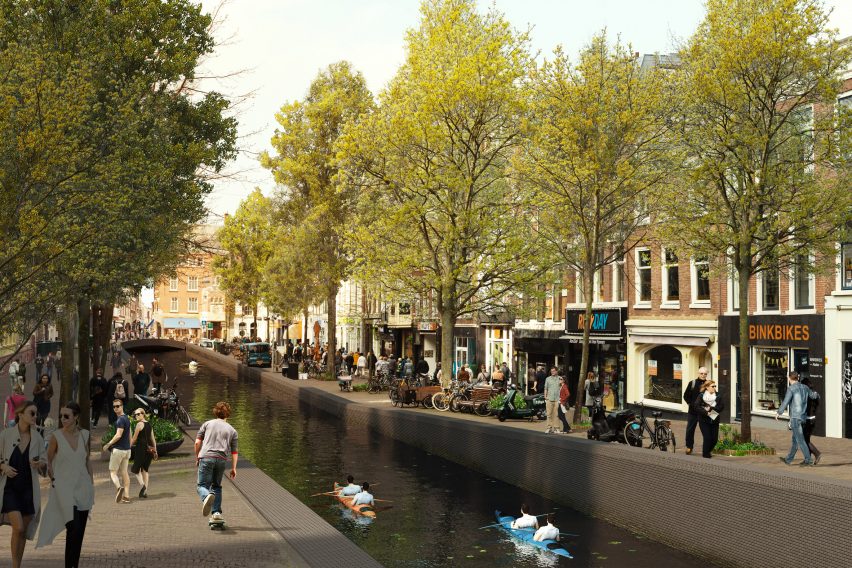
As a city founded as a government centre – and housing one of the world's most important courts – The Hague has had little dependence on its canal system in comparison to other Dutch cities, which historically relied on them for trade.
Consequently, much of its water network was filled between 1910 and 1970 to create space for tram lines and buildings – despite a local grassroots movement to preserve it.
Recent years have seen a revival in this movement as part of the community's Spinoza Power 2.0 project.
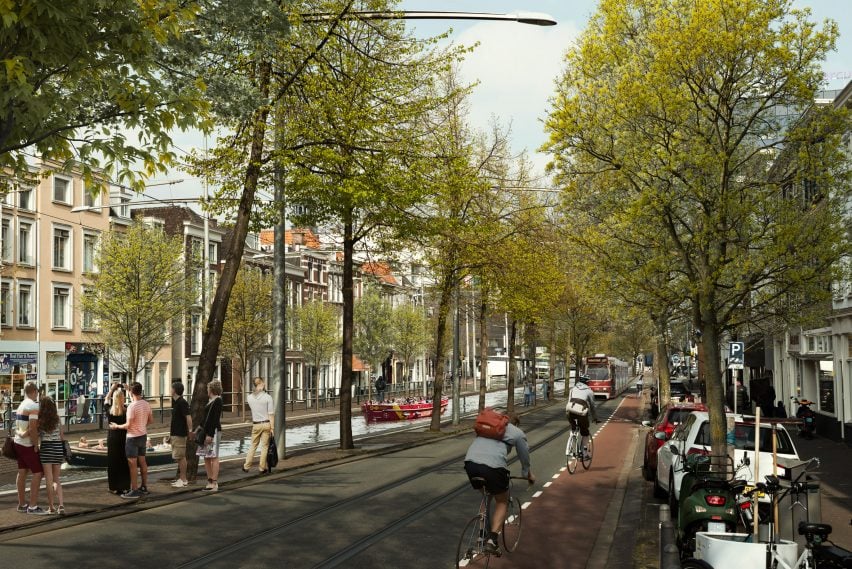
Spinoza Power 2.0 is calling on the local authorities to remove and repurpose the red light district, and create a market hall in place of an underperforming parking garage.
Building on this vision, MVRDV has developed a deliberately "simple and realistic" masterplan to reopen a number of its canals, rejoining those that run around its edges.
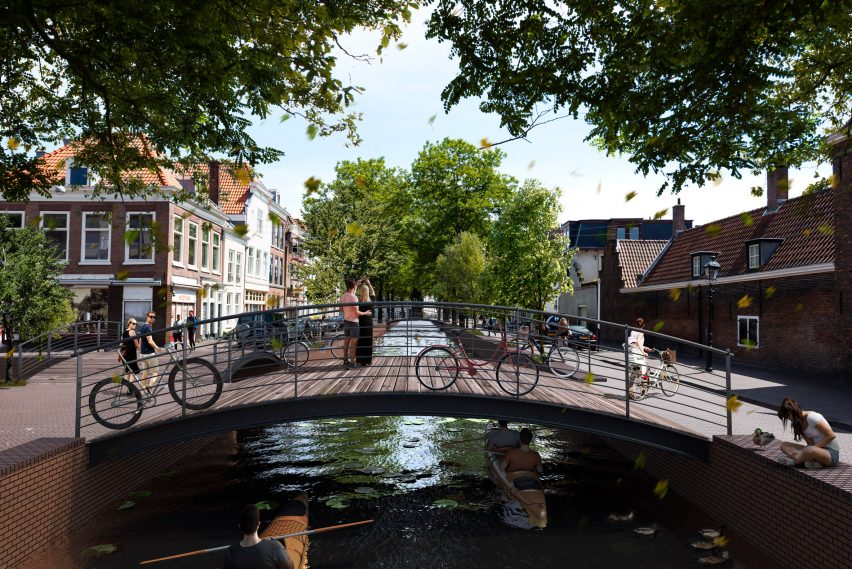
"Based on a study of the historical canals by local firm BAU architects, MVRDV envisions the restoration of the main canals, and has drawn up plans for the minor canals which are either dead-ends or lost due to underground works or buildings," explained the studio.
"Each of these canal stubs needs to function as an urban activator."
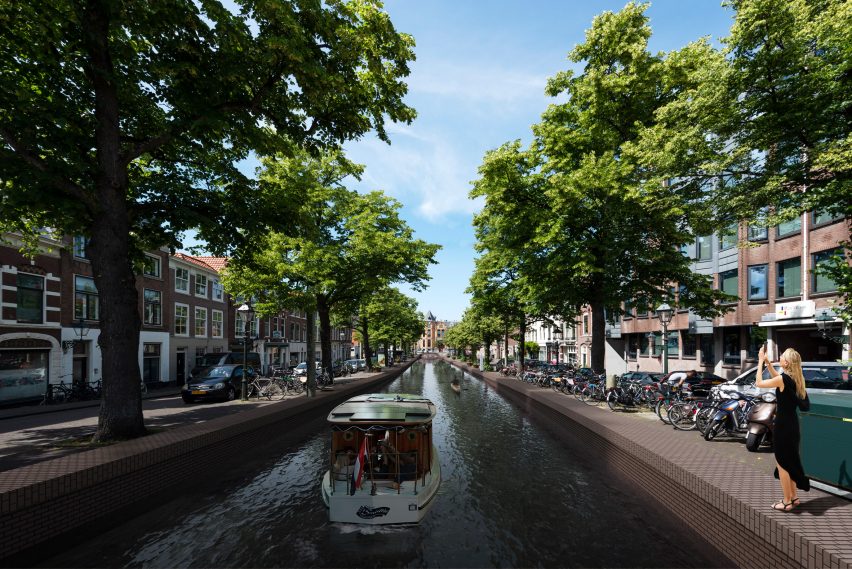
The visuals imagine the reopened canals used as routes for swimming, canoeing, and surfing to support The Hague's ambition of becoming a sports-focused city, as well as pedalos and gondola-style vessels.
MVRDV says they have also proposed for the restored waterway to provide space for koi carp – a species of carp that are usually kept for decorative purposes in outdoor koi ponds or water gardens.
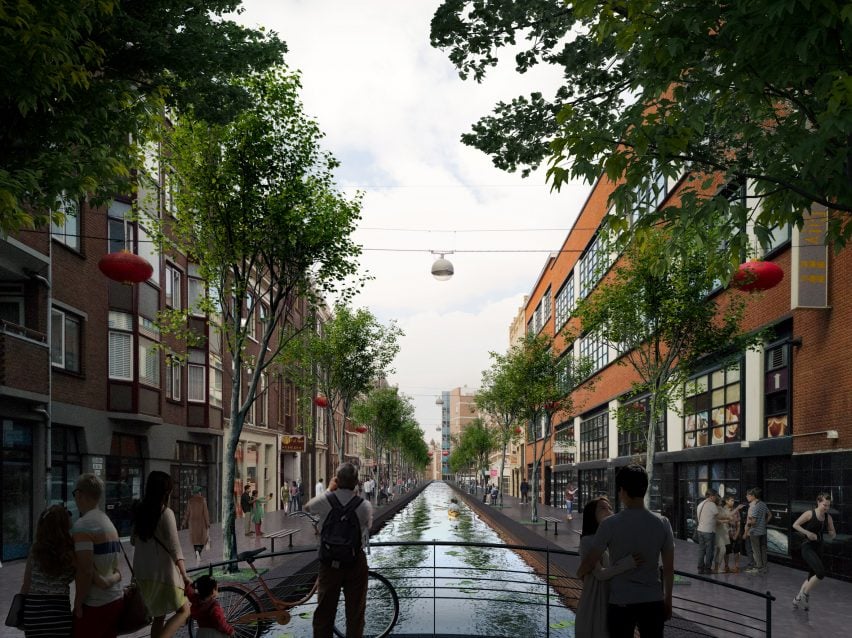
MVRDV is an architecture studio based in Rotterdam, founded in 1991 by Winy Maas, Jacob van Rijs and Nathalie de Vries.
Elsewhere in the Hague, MVRDV is developing a pair of mixed-use towers that will feature natural stone facades that stagger into wooden outdoor spaces on top.
Visuals courtesy of MVRDV.
Project credits:
Architect: MVRDV
Partner in charge: Winy Maas, Jan Knikker
Design team: Lisa Ulbrich, Gustavo van Staveren, Emilie Koch, Fedor Bron, Elien Deceuninck Visualisations: Kirill Emelianov
Strategy and development: Amanda Rooseboom, Miruna Dunu
Advisor: Shireen Poyck
Neighbourhood organisations: Grachten Open / Buurtplatform Oude Centrum eo (Bob Willem van Hooft, Chris Schram, Jan Elsinga, Shireen Poyck); Wijkorganisatie Oude Centrum / Spinozakracht (Karlijne Scholts, Marieke de Jong, Jan van den Brink)